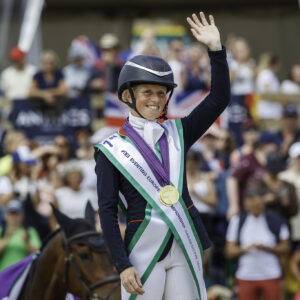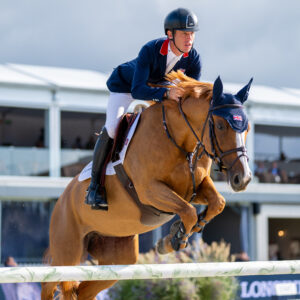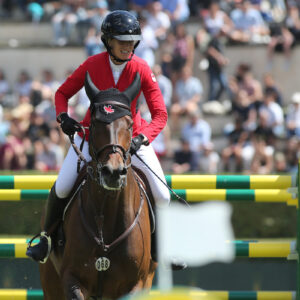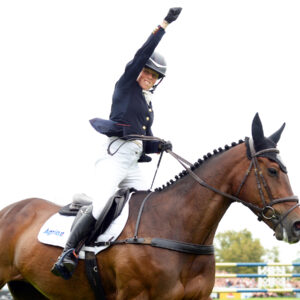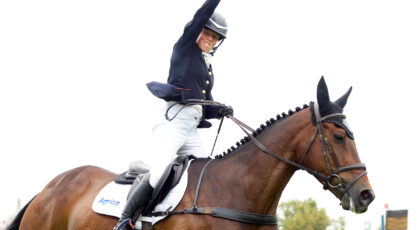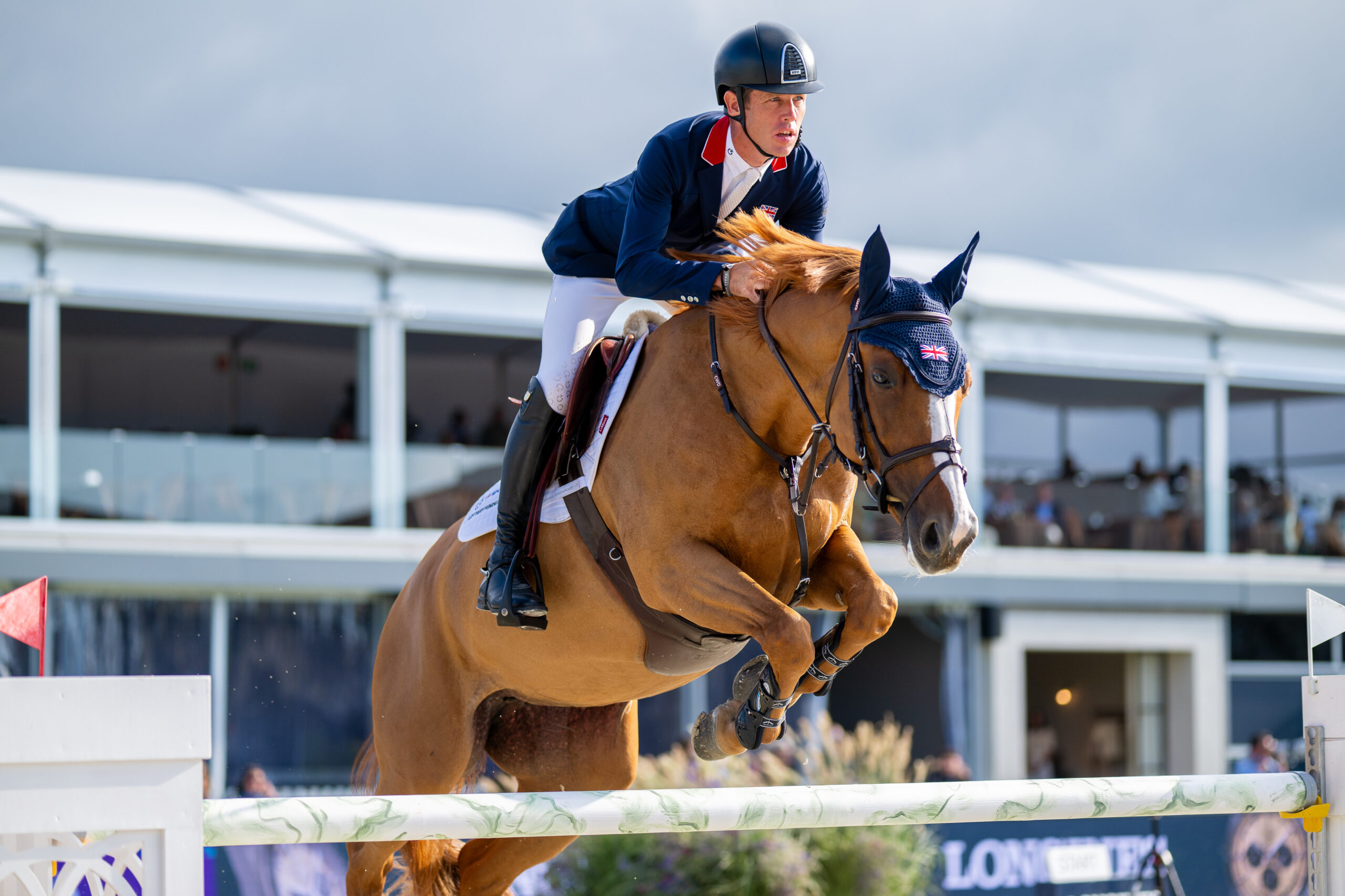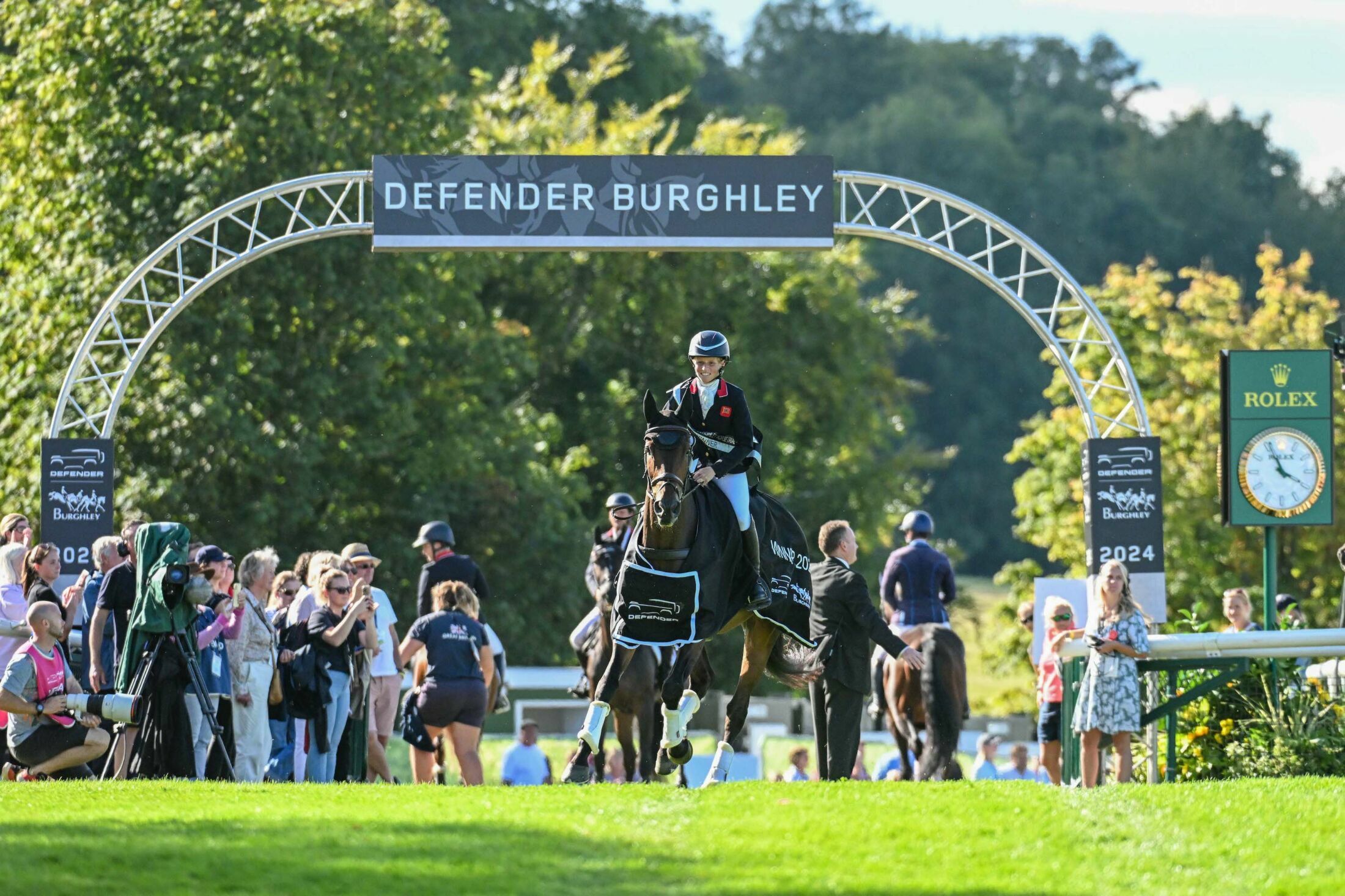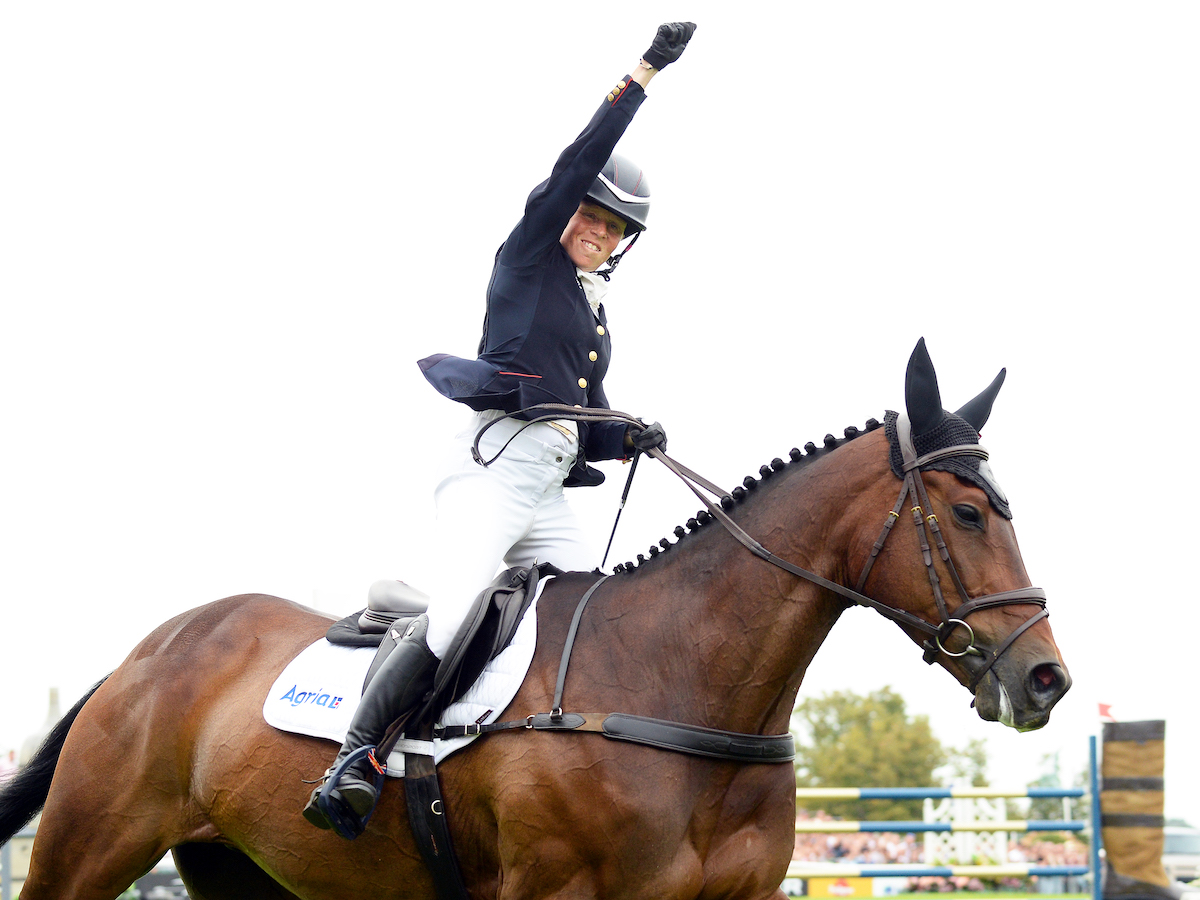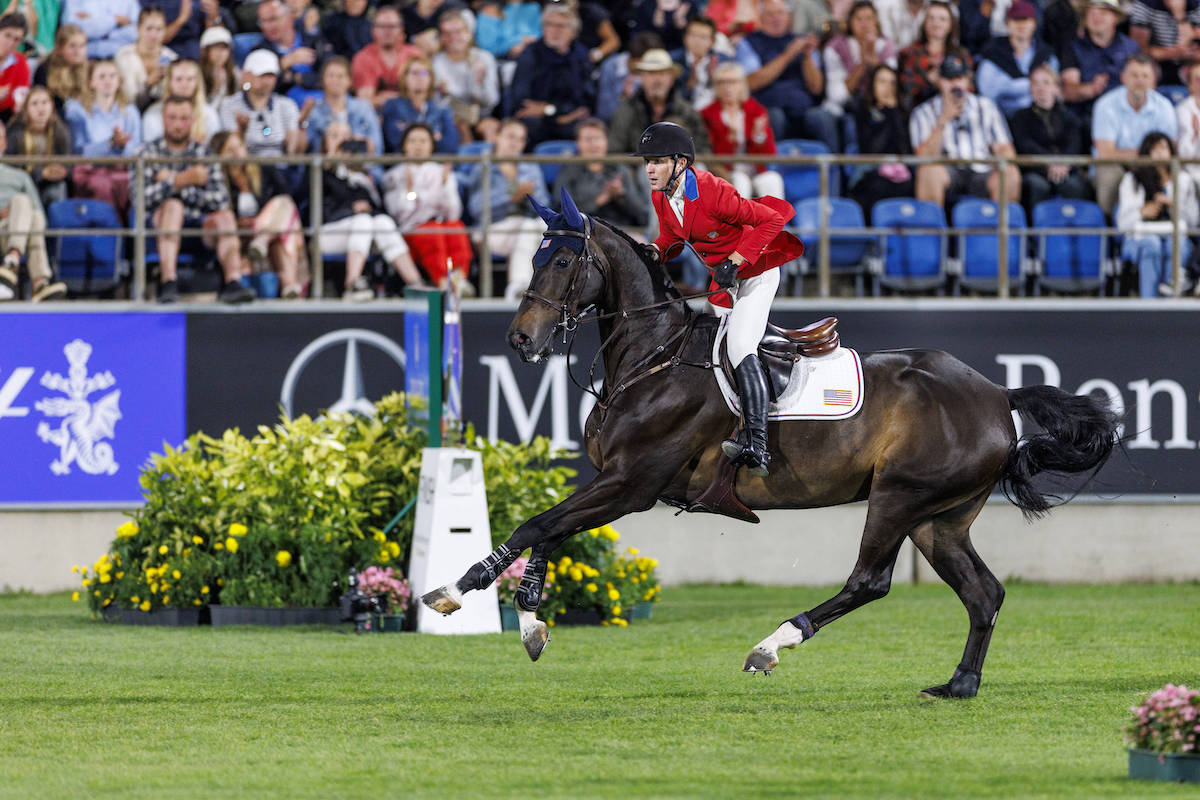I remember the first time I read the statistic: I was more likely to get seriously injured riding my horse than I was riding my motorcycle. At first I rejoiced, as I could use it to validate my vehicular choice to my family—after all, I’d ridden horses since I was five, so how could they take issue with my adult activity given it was apparently safer?
In either case, the chance of concussion or more serious head injury remains very real, and therefore self-protective steps, like wearing a helmet, make a lot of sense. Recently I also discovered that there are exercises that can help, too, by strengthening the neck so it can better withstand sudden movement of the head. In his book Neuroathletics for Riders, author Marc Nölke, a neuroathletics specialist, explores exercises like the ones that follow to help improve brain and body communication. Nölke suffered a severe concussion during a ski racing fall in the Olympics. It was this experience that would eventually lead him to coaching competitors in many sports, including equestrians, the kinds of “brain training” they can do to prevent injury and promote top performance.
***
Isometric muscle contractions are simple, but extremely valuable drills. Isometry means “muscle contraction without movement.”
Isometric training has many effects:
- It lowers blood pressure.
- It’s good for pain relief.
- You can use it to build muscle.
- It can make you stronger.
- It helps with fibromyalgia.
- Isometric neck training reduces the impacts of concussions. It might sound crazy, but if your neck muscles are trained, your head won’t be flung back and forth as much after an impact. Makes sense, doesn’t it?
For a very long time, I’ve been specifically using isometric training in performance sports to train certain kinds of movements when there has been a lack of strength development or abnormal movement.
Fascinatingly, the muscles of the neck have a direct neuronal connection to the vestibular system, namely via the nuclear complex of the vestibular system, the vestibular nuclei (nucleus vestibularis). The vestibular system detects the position and movement of the head in space, which allows for the coordination of eye movements, posture, and equilibrium. Isometric muscle contractions indirectly activate the vestibular system. This can be very helpful to riders.
In neuroathletic training, isometric contractions help firstly by strengthening the neck musculature and thereby helping us avoid concussions or reduce their severity. Secondly, they’re ideal for activating the neck muscles, which are rarely used in everyday life.
The following exercises for the cervical spine are rather delicate and geared toward precise motor controls. You’ll learn to feel when you are doing them correctly, and you’ll be able to do them better and better.

EXERCISE 1: Push the Head Forward
Focus on: Consistent tension in the muscles that rotate the head, the sternocleidomastoid muscles, which tense when you press to the right and left of your throat.
How to do it:
- Rub the front of your neck with your hands for around 20 seconds, so you can really feel it. Stand in a neutral position.
- Put one hand on top of the other and hold them in front of your forehead.
- Now push your forehead forward as if you were going to nod, and at the same time, push back with your hands against your forehead. Your head should stay still.
- Don’t push with all your strength; make sure you still feel as if you could press harder. Hold the contraction for eight to ten seconds.
- Relax the muscles as soon as possible after the exercise.
- Keep your breathing relaxed, and breathe in and out through your nose. This note about relaxed nasal breathing isn’t an afterthought; it’s important for the successful execution of this drill.

EXERCISE 2: Push the Head Back
Focus on: Consistent tension in the neck musculature.
How to do it:
- Rub your neck with your hands for around 20 seconds. Stand in a neutral position.
- Clasp your hands and place them on the back of your head. You might be able to feel the muscles that start at your skull on the back of your head. You should avoid touching them if possible.
- Push the back of your head back into your hands, as if you wanted to move your head to look above you, but don’t actually look up.
- Don’t push with all your strength; make sure you still feel as if you could push harder.
- Keep your breathing relaxed, and breathe in and out through your nose. Hold the contraction for eight to ten seconds.

EXERCISE 3: Push the Head to the Left and the Right
Focus on: Consistent tension in the left and right neck musculature.
How to do it:
- Rub the left side of your neck with your hand for around 20 seconds. Stand in a neutral position. Place your left hand on the left side of your skull such that the ball of your hand is around two fingers’ width above your auditory canal, and your fingers are pointing to the middle of your skull at the back.
- Angle your left elbow out sideways so it points away from your body.
- Now push your head to the left, into your hand, and push back against it with your hand. Don’t move your head.
- Don’t push with all your strength; make sure you still feel as if you could push harder.
- Keep your breathing relaxed and breathe through your nose.
- Hold the contraction for eight to ten seconds.
- Repeat all the above steps on the right side.

This excerpt from Neuroathletics for Riders by Marc Nölke is reprinted with permission from Trafalgar Square Books (www.HorseandRiderBooks.com).


 July 11, 2023
July 11, 2023 






